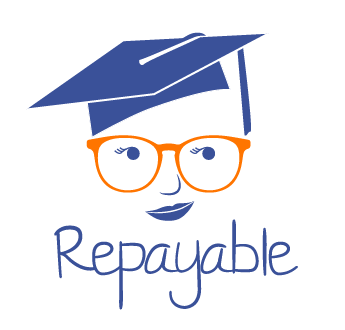Start here if you’re just starting to figure out your student loans. It’s the road map for student loan debt. Follow the map and you will end up with a strategy for repayable student loans. Estimated read time ~10 minutes.
Find out how much student loan debt you have.
The very first step in finding a way to make your student loan debt repayable is to figure out exactly how much you owe. You may have a sense of how much you owe i.e. around $40,000. But the key to obtaining freedom from debt is to know your debt well, which means knowing the exact amount you owe. There’s a big difference between about $40,000 and $43,700.
You can find your total debt by logging in to the website of your loan servicer(s) and looking at your total loan amount. If you have multiple servicers, add the individual loan amounts together.
Start by reading the post How to Figure out How Much Student Loan Debt You Have.
Find out if you have federal or private student loans.
Federal and private loans may have different strategies for repayment so it’s important to know which type of loans you have.
The post How to Figure out if You Have Federal or Private Student Loans gives you a detailed how-to.
Determine when you have to start repaying your loans.
If you’re not already in repayment, you next step is to figure out when you’ll need to start repaying your loans. Federal loan repayment typically begins six months after graduation for Direct and Stafford loans but can differ for Perkins and Plus loans. Private loan repayment grace periods vary by lender so you’ll need to contact your private lender to figure out exactly when you’ll need to begin repayment.
Determine your repayment plan.
Your repayment plan dictates your financial approach to student loans. Be sure you’re in a plan that matches your desired approach to loan repayment. Read the posts How to Figure Out Your Repayment Plan for a step-by-step guide and Should You Break Up With Your Student Loan Repayment Plan? to get a sense of the key tenants of repayment plans so you can pick the best one.
Look at your interest rates.
When you go to your loan servicer’s website and look at your total loan amounts your interest rate for each loan should be listed next to the loan amount. Your interest rate helps you decide where to allocate extra payments (higher interest loans should generally be your first target all else equal).
Determine your financial state of affairs using debt:income ratio.
Are your student loans a financial nightmare? Are they really? The media will tell you yes, old school graduates will tell you it’s your own fault, so where is the truth? The truth lies in a simple mathematical tool called debt:income ratio. Find out how to calculate it (swear to god you only need basic arithmetic) and what it tells you by reading How Bad is Your Student Loan Debt? A Simple Answer.
Avoid Default
If things aren’t looking so rosy for you on the student loan debt front don’t worry, there are options. Check out Don’t Default on Student Loans: Do This Instead and Student Loan Repayment Panic? Let’s Talk About Deferment and Forbearance.
Decide your next steps.
After you gain an understanding of your student loans you may realize your best option isn’t just optimizing your repayment plan. If you think your best options is refinancing or loan forgiveness you can learn more about those topics by checking out the refinancing posts on the blog or loan forgiveness posts on the blog or by watching videos on the Repayable YouTube channel. The guides for refinancing and loan forgiveness are coming soon.
Additional Resources:
Federal Student Aid Understanding Repayment
Nerd Wallet Understanding Student Loans
Accessing your Student Loan Information Through NSLDS FAQ
A Description of Federal Loans
Federal vs Private Student Loans
Federal Student Aid Guide to Repaying Federal Loans

Recent Comments